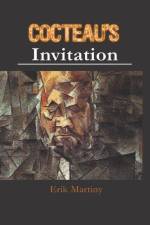av Erik Martiny
259,-
From the viewpoint of the first narrator in Cocteau's Invitation, Mr. Hearse has lived a neat and tidy life, one of convention, of order, without even a hint of the existential angst that plagues the narrator. Indeed, the narrator, a fifty-year-old teacher who is hopelessly entangled in an erotic affair with a student in her final year of school, is a disciple of Rabelais, Shakespeare, Joyce, Beckett, Nabokov, Kristeva, and Cixous. But when the narrator discovers an invitation from Jean Cocteau hidden away in a small wooden casket in the attic of Mr. Hearse's house, he realizes that he was mistaken about the life Mr. Hearse has lived. The latter two-thirds of the novel is devoted to the strange but compelling relationship between Mr. Hearse and Jean Cocteau. Mr. Hearse, as the actor of his tale, now becomes the narrator, but it is Jean Cocteau who is the Director of the narrative. It is Cocteau who sets up the encounter between Mr. Hearse and a modern-day bearded Tiresias. It is Cocteau who orchestrates the meeting on the Mirabeau Bridge. And Cocteau is the reason for travelling to Siam. By the end, of course, the reader understands that the reality of the fifty-year-old teacher presented in the beginning and the reality of Mr. Hearse's life are mirror images of each other, a fractured, fractal mirroring, to be sure, like a Picasso painting, where the boundaries between time and space are blurred. But that is exactly what we should expect in a novel in which Jean Cocteau resides as a character.











